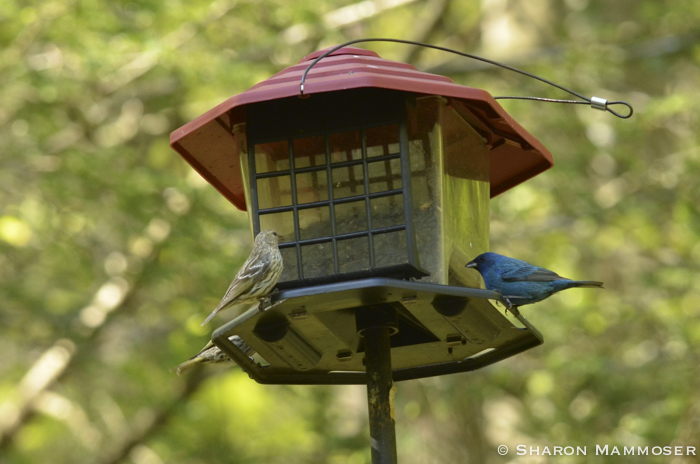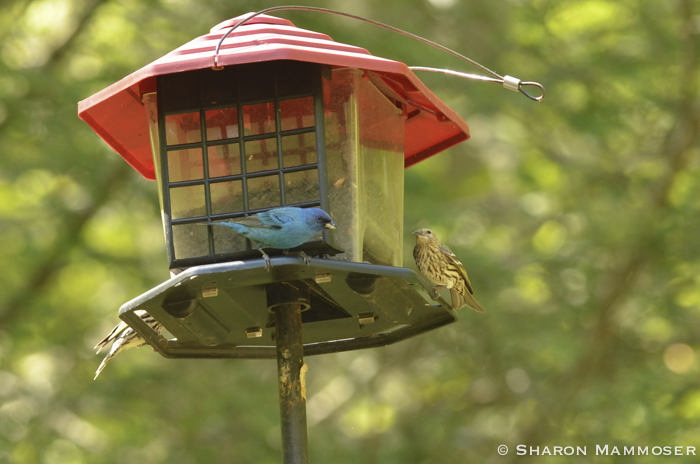As many of you knew, last week’s puzzler was a male indigo bunting.

When you see this bird in the sunlight through a pair of binoculars, it is a rare treat, as its iridescent feathers are always a striking contrast to the green and brown background. Female indigo bunting are a lot less dramatic, with streaky brown bodies that make them blend into their background, not stand out. Here is a pair of indigo buntings at a bird feeder:


Like most of of other summer songbirds, indigo buntings eat buds, berries, seeds, insects and other invertebrates. During the summer months, they consume a lot of invertebrates, including beetles, cicadas, spiders, aphids, grasshoppers and caterpillars. According to Cornell Lab of Ornithology, the indigo bunting even eats the brown-tail moth caterpillar, “which is covered with noxious hairs that cause nasty rashes and respiratory problems in people, presents no obstacle to a hungry bunting. “
Male indigo buntings do not help with nest construction, unless you count watching as work. While the female goes about finding and collecting appropriate materials, choosing a spot and then actually building the nest, the male sits nearby and lazily observes, with no involvement! Sometimes, especially in early spring, this process may take her up to 8 days to complete! Like hummingbirds, indigo buntings will find and use spider silk in construction of the nest.
I’ve had at least one person tell me that puzzler was a bit too easy! So here’s another bird puzzler, but this one features a bird that’s a lot less dramatic. See if you recognize it.
Oh, and have a fabulous weekend! Happy Father’s Day to all of our Dad’s out there!

